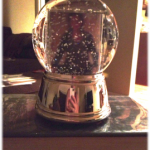I hope my first two posts whetted your appetite, and now you’re wondering how to start. Call it “stealth mindfulness”: you’ve already started. “A Beginning” turned your attention to your breath, and “The Easy Way & The Easier Way” challenged you to sit for two minutes each day—two simple activities that begin a mindful practice. This week’s post will hone in on a specific layer of these activities.
Contrary to what some think (and the reason behind most “I can’t meditate” reactions), the goal of mindful meditation is not to achieve a blank mind, empty of thoughts and images and memories. On the contrary, it calls for “mind-fullness.” In the practice ending my first post (“simply breathing”), you’ll see “alertness” in the first step and eight instances of the word “notice.” This wasn’t lazy writing. It was intentional use and repetition, calling your attention to … well … your attention: the ability to notice, be aware, and remain alert to where your mind goes. While you were sitting “with alertness” and “noticing” (x8) your breath, you were practicing “alertness training” or exercising “the basis of all higher cognitive and emotional abilities” (Tan, 2012, p. 7).
My educator’s mind connects this idea of alertness training (noticing what you notice) to the metacognition (thinking about your thinking). In my recent guide on metacognition (Chick, 2013), I briefly previewed some of the research and offered a few concrete practices for the classroom. I also highlighted the “meta,” or “a level of awareness above the subject matter ,” heavily researched and found to be beneficial to learning because it
“help[s] students become aware of their strengths and weaknesses as learners, writers, readers, test-takers, group members, etc. A key element is recognizing the limit of one’s knowledge or ability and then figuring out how to expand that knowledge or extend the ability. Those who know their strengths and weaknesses in these areas will be more likely to ‘actively monitor their learning strategies and resources and assess their readiness for particular tasks and performances’ (Bransford, Brown, & Cocking, p. 67).”
In the classroom context, metacognition is all about being aware of and paying attention to your thinking, with the goal of monitoring and training them differently when they don’t meet your needs (i.e., effective teaching or studying or test-taking, long-lasting learning). Mindful attention is all about being aware of and paying attention to your thoughts, with the goal of monitoring—not avoiding, ignoring, repressing, or judging—and training them when they don’t meet your needs (i.e., peace of mind, focus, heightened awareness). They both focus your attention to mental habits that don’t serve your needs well: last-minute cramming, passively listening in class, skimming, resisting difficulty, multitasking,* worrying, obsessing, et al.**
I struggle with some of those latter habits. And then in a mindfulness workshop a few  months ago, someone used the metaphor of a snow globe—and I got it. (And I made one to guide me. And my colleague Rhett McDaniel made it my logo.) It’s a common metaphor
months ago, someone used the metaphor of a snow globe—and I got it. (And I made one to guide me. And my colleague Rhett McDaniel made it my logo.) It’s a common metaphor
that I think about daily.
Practice
- Sit comfortably, and take three slow, deep breaths.
- Imagine a snow globe, shaken (or check out mine). The swirling snowflakes are your thoughts, memories, worries, plans. Imagine them swirling around you as you sit calmly. Observe them. Notice them. Be aware of them.
- Breathe.
- Just watch them—the snowflakes, your thoughts—as they slow down and pause on the ground.
- Breathe.
- Do nothing: don’t fight, resist, or judge them. Unless you shake the globe, the snow will settle. If you just observe them and don’t expend any effort, the snow will settle. Let gravity bring them to a rest.
Expect no miracles: you won’t get rid of them or be magically at peace. Everyone shakes a snow globe, so the stillness is temporary. It takes mindful, repeated practice of imagining the snow globe and watching the snow fly and then settle for awhile–and mindfully, repeatedly the practice of observing your thoughts swirling, and then settling for awhile. Practice.
When you’re worrying, when you’re stressing, if you’re overwhelmed, think of the snow globe, and watch the snow fall.
—
* I’ll write more about multitasking soon, but in the meantime, this NPR story and this brief summary of the research will explain how it doesn’t serve us well in most situations.
** The determination that something “doesn’t serve you well” is different from judging it as “bad” or “wrong.”
—



